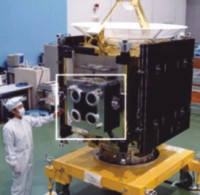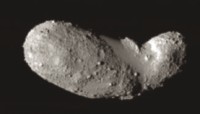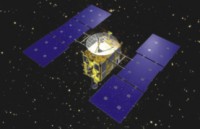| Home - Back Issues - The Team - Contact Us |
 |
| Volume 10 |Issue 22 | June 10, 2011 | |
|
|
Technology Hayabusa Subir Das
Japanese Aerospace Exploration Agency (JAXA) made a quantum leap in carrying out a scrupulous observation of an asteroid and collecting sample from it. Due to their low masses and low gravitational fields, asteroids remained inaccessible to spacecrafts even decades after man's landing on the ever tempting celestial body, the moon. Dirigible spacecrafts dispatched by the scientists couldn't land on them as asteroids, unlike planets, don't have sufficient gravitational field to trap them into the web of the force of attraction. Hayabusa, an unmanned spacecraft launched by JAXA, was allowed to maintain a minimal distance between itself and the asteroid, Itokawa, and hit the surface of the asteroid so that surface material would cling to the spacecraft due to adhesiveness. Hayabusa (the Japanese word for falcon), as its name implies, made its hawk-eyed observation of the asteroid's rotation, dimensions and colours for a long period of time. Hayabusa maintained a heliocentric orbit very closer to Itakawa instead of moving in an orbit around the asteroid. Scientists collected innumerable snaps of the asteroid captured by Hayabusa from different angles. In 20 November, 2005, Hayabusa was steered at 10 cm/s towards the asteroid. It hit Itokawa and bounced off the surface along with the amount of surface material sufficient for experimentation. Scientists calculated the shape, density, dimensions, position and rotational duration from the data collected by Hayabusa. The unmanned spacecraft came back to the earth's atmosphere on 13 June, 2010. Before Hayabusa successfully rendezvoused with Itokawa and collected sample from it, NASA dispatched two spacecrafts Galileo and NEAR Shoemaker to asteroids. These two spacecrafts visited asteroids but failed to collect samples from the celestial bodies. Hayabusa mission will make a significant contribution to further research into the origin of meteors. The samples collected from Hayabusa will help the space scientists confirm the origin of the meteorite samples separated from Itokawa. At a seminar jointly organised by Bangladesh Astronomical Society and Japanese Aerospace Exploration Agency, held at Novo Theatre, Dhaka, Dr. Takashi Kubota, one of the distinguished researchers involved in the Hayabusa mission, delivered a lecture on how the unmanned spacecraft collected details about the asteroid with pinpoint accuracy. He said that Hayabusa mission is one of the most remarkable events in the history of space science as scientists for the first time collected sample from an asteroid.
Copyright
(R) thedailystar.net 2011 |


